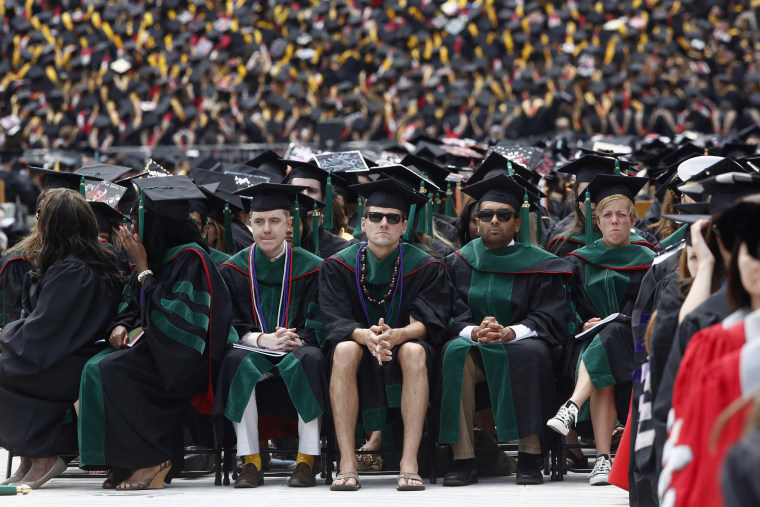Tuition at state colleges continues to rise, but the country experienced the lowest increase this academic year for the first time in almost 40 years.
In-state tuition cost about $8,900 for the 2013-2014 academic year, a 2.9% increase since the previous decade when it was 8%, according to the College Board’s 30th annual Trends in Student Aid report published Wednesday. That is the smallest one-year rise since 1975.
In addition, tuition at private universities this year rose 3.8% to an average of $30,100, a slightly lower rate than the increases in recent years, the report found.
“Any increase is not good news, but it shows people are working hard, and public and private institutions are facing increased costs themselves," Kathleen Payea, a policy analyst for College Board, told msnbc.
But, while rising costs for a college education have slowed, students and their families pay more of their own money because grants are not rising at the same rate as tuition--and it's not cheap. These out-of-pocket payments declined about seven years ago because of increased tax credits and Federal Pell Grants.
But Pell Grant funds are driven by student recipients. For example, the number of students enrolling in financial aid has declined in previous years, which means fewer individuals receive the grants, Payea said.
"All of these things together should be positive news for families that costs are being contained and universities and private employers and states are working hard to both provide grants to students as well as to do everything they can to contain those price increases," she said.
The key is to "lift the covers and see what the real story is behind the numbers" whenever a report is published, said Harrison Wadsworth, executive director of the Coalition of Higher Education Assistance Organizations.
"We still need a robust financial aid system to help most families pay for college, though, and that is going to be important to make sure there are grants and loan dollars available because college is still a great investment for the vast majority of people," Wadsworth told msnbc.
The average combined annual cost of tuition, fees, and room and board at the public and private level rose by 101% and 137% respectively over the last 50 years. Sending a child to a public university between 1950 and 1970 cost a family 4% of the household income. The number nearly tripled to 11% in 2010.
About 60% of students who earned a bachelor's degree in 2012 from the first public or private nonprofit college in which they enrolled graduated with debt. The average debt was $26,500.
President Obama signed the bipartisan student loan bill into law earlier this year in August. As a result, the interest rate rested at 3.86% for undergraduate student loans and 5.41% for graduate loans. Without the legislation, rates could have increased from 3.4% to 6.8%.
The legislation was initially held up as Republicans didn't want to spend anymore money to keep rates low and a number of Democrats wanted better guarantees that rates wouldn't go up again.
From 2002 to 2013, the total number of federal undergraduate and graduate student loan borrowers increased by 69%.
The slowed increase could be a trend that continues into the future because consumers will react to high prices and put pressure on institutions to resist raising their enrollment prices, Wadsworth said.
"We have been reading and thinking that college costs are spiraling out of control," Payea said. "What this means is that everyone is focused on what is happening to students and everyone is being really careful to be sure that it is not spiraling."
